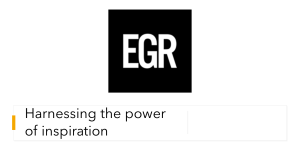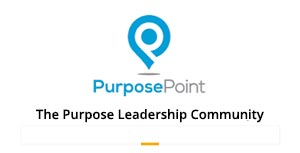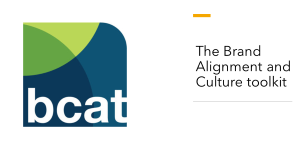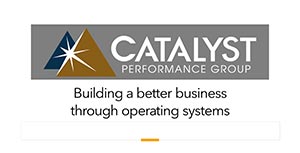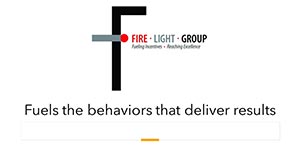W. Edwards Deming: Stakeholder Capitalism Pioneer
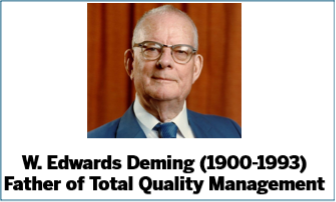 As frequently reported in ESM, the concepts of stakeholder management go back decades not to social activitists or the 2019 Business Roundtable stakeholder management pledge but to management consultants. People like W. Edwards Deming and Peter Drucker in the 1940s through 1960s sought a more sustainable path to value creation than the purely shareholder-focused approach that sanctions enhancing profits by extracting value from stakeholders and the environment by producing poor quality products in a wasteful manner that abuses workers and the environment.
As frequently reported in ESM, the concepts of stakeholder management go back decades not to social activitists or the 2019 Business Roundtable stakeholder management pledge but to management consultants. People like W. Edwards Deming and Peter Drucker in the 1940s through 1960s sought a more sustainable path to value creation than the purely shareholder-focused approach that sanctions enhancing profits by extracting value from stakeholders and the environment by producing poor quality products in a wasteful manner that abuses workers and the environment. Click here to subscribe to the ESM weekly e-newsletter.
W. Edwards Deming was anything but a social activist. Born in 1900, he was a management consultant (and also a musician.) He famously helped the Japanese transform the brand “Made in Japan” from makers of junk to the world’s most reliable manufacturers of automobiles and highest quality electronics, sound systems, pharmaceuticals, and more.
Click here for a growing list of Golden Rule leaders and companies.
 Deming’s 14 principles below, published in his book, Out of Crisis in 1982, two years before the publication of R. Edward Freeman’s Strategic Management: A Stakeholder Approach, outlines the holistic management approach that is among the primary characteristics of stakeholder capitalism. (Freeman was among the first people designated by the EEA as a Golden Rule leader.) Writing of his work in 2019, the Demings Institute notes that “Deming understood the importance of focusing on the interactions between components of...systems when managing organizations. Each action we choose to take or not take has direct effects and often many indirect effects (and those indirect effects can be very powerful over the long term). Only by viewing the organization as a system and considering how decisions impact the entire system over the long term can we gain the most powerful advantages possible with Deming’s ideas.”
Deming’s 14 principles below, published in his book, Out of Crisis in 1982, two years before the publication of R. Edward Freeman’s Strategic Management: A Stakeholder Approach, outlines the holistic management approach that is among the primary characteristics of stakeholder capitalism. (Freeman was among the first people designated by the EEA as a Golden Rule leader.) Writing of his work in 2019, the Demings Institute notes that “Deming understood the importance of focusing on the interactions between components of...systems when managing organizations. Each action we choose to take or not take has direct effects and often many indirect effects (and those indirect effects can be very powerful over the long term). Only by viewing the organization as a system and considering how decisions impact the entire system over the long term can we gain the most powerful advantages possible with Deming’s ideas.”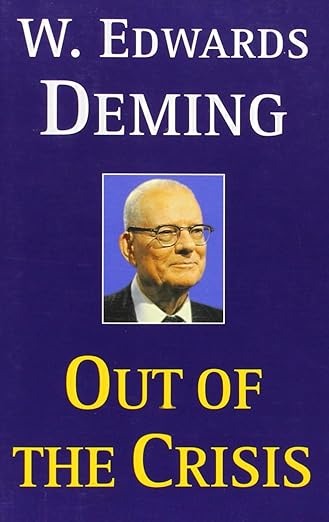 Demings rarely used the term “stakeholders” but he articulates the principles of stakeholder management in an article in The New Economics in 1993: “The aim proposed here for any organization is for everybody to gain – stockholders, employees, suppliers, customers, community, the environment – over the long term.”
Demings rarely used the term “stakeholders” but he articulates the principles of stakeholder management in an article in The New Economics in 1993: “The aim proposed here for any organization is for everybody to gain – stockholders, employees, suppliers, customers, community, the environment – over the long term.”Despite his recognized legacy in the world of total quality management, his vision for the transformation of management did not occur in his lifetime and remains nascent today. In the forward to his 1982 book, Out of the Crisis, in which he publishes his 14 steps to successful management, he writes: “The aim of this book is transformation of the style of American management. Transformation of the American style of management is not a job of reconstruction, nor is it revision. It requires a whole new structure, from foundation upward. Mutation might be the word, except that mutation implies unordered spontaneity. Transformation must take place with directed effort. The aim of this book is to supply the direction.” Much progress has occurred by the profiferation of B-lab, benefits corporations, and other organizations dedicated to creating value through people, but the overall concept of stakeholder capitalism and management remains little known.
Compare Demings’ 1982 framework for successful management with the practice of shareholder capitalism today. Demings dismissed the notion that focusing on profits provides a reliable North Star for leaders. For, without having stakeholders fully engaged in the organization’s purpose, goals, objectives, and values, it’s difficult to optimize profits for shareholders over the long term. Here's what successful management looks like to Demings.
1. Create constancy of purpose toward improvement of product and service, with the aim to become competitive and to stay in business and provide jobs.
2. Adopt the new philosophy. We are in a new economic age. Western management must awaken to the challenge, must learn their responsibilities, and take on leadership for change.
3. Cease dependence on inspection to achieve quality. Eliminate the need for inspection on a mass basis by building quality into the product in the first place.
4. End the practice of awarding business on the basis of price. Instead, minimize total cost. Move toward a single supplier for any one item, on a long-term relationship of loyalty and trust.
5. Improve constantly and forever the system of production and service to improve quality and productivity, and thus constantly decrease costs.
6. Institute training on the job.
7. Institute leadership. The aim of supervision should be to help people and machines and gadgets to do a better job. Supervision of management is in need of overhaul, as well as supervision of production workers.
8. Drive out fear, so that everyone may work effectively for the company.
9. Break down barriers between departments. People in research, design, sales, and production must work as a team, to foresee problems of production and in use that may be encountered with the product or service.
10. Eliminate slogans, exhortations, and targets for the work force asking for zero defects and new levels of productivity. Such exhortations only create adversarial relationships, as the bulk of the causes of low quality and low productivity belong to the system and thus lie beyond the power of the wor force.
11a. Eliminate work standards (quotas) on the factory floor. Substitute leadership.
11b. Eliminate management by objective. Eliminate management by numbers, numerical goals. Substitute leadership.
12a. Remove barriers that rob the hourly worker of his right to pride of workmanship. The responsibility of supervisors must be changed from sheer numbers to quality.
12b. Remove barriers that rob people in management and in engineering of their right to pride of workmanship. This means, inter alia, abolishment of the annual or merit rating and of management by objective.
13. Institute a vigorous program of education and self-improvement.
14. Put everybody in the company to work to accomplish the transformation. The transformation is everybody's job.
Enterprise Engagement Alliance Services
 Celebrating our 15th year, the Enterprise Engagement Alliance helps organizations enhance performance through:
Celebrating our 15th year, the Enterprise Engagement Alliance helps organizations enhance performance through:1. Information and marketing opportunities on stakeholder management and total rewards:
- ESM Weekly on stakeholder management since 2009. Click here to subscribe; click here for media kit.
- RRN Weekly on total rewards since 1996. Click here to subscribe; click here for media kit.
- EEA YouTube channel on enterprise engagement, human capital, and total rewards since 2020
 Management Academy to enhance future equity value for your organization.
Management Academy to enhance future equity value for your organization.3. Books on implementation: Enterprise Engagement for CEOs and Enterprise Engagement: The Roadmap.
4. Advisory services and research: Strategic guidance, learning and certification on stakeholder management, measurement, metrics, and corporate sustainability reporting.
5. Permission-based targeted business development to identify and build relationships with the people most likely to buy.
Contact: Bruce Bolger at TheICEE.org; 914-591-7600, ext. 230.






